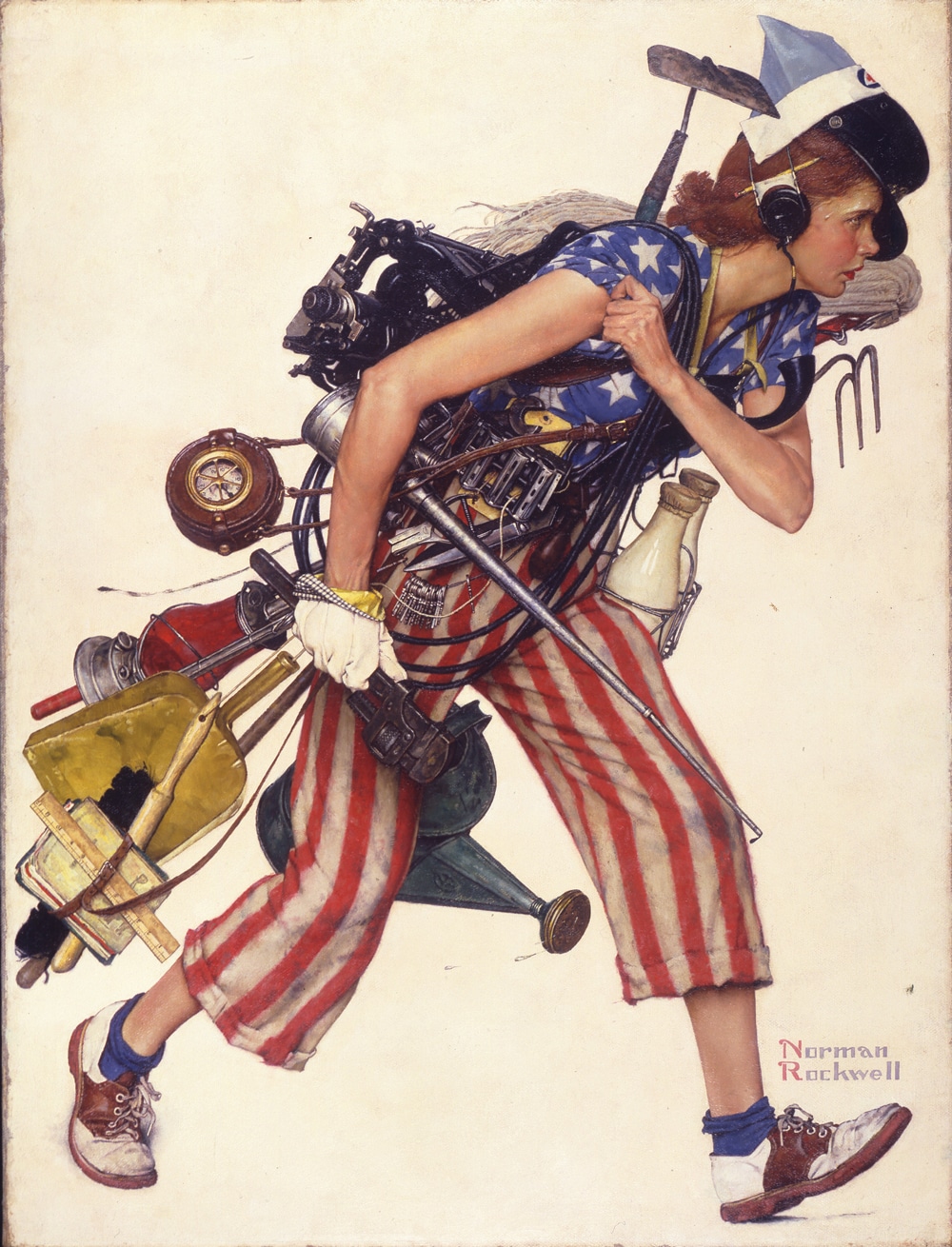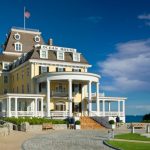Out of the Shadows | The National Museum of American Illustration in Newport, RI
How a long-neglected Newport mansion became The National Museum of American Illustration, a dazzling showcase for American masterworks of illustration art.

Coffee By Design | Portland, Maine
Photo Credit : Katherine Keenan
I’m met in the grand foyer by founders Judy Goffman Cutler and Laurence Cutler. Judy was one of the first to recognize that illustrators both reflected and, over time, molded American society with their images, which were everywhere during the first half of the 20th century. “The fact that the illustrations in magazines or calendars originated as fully realized paintings by exceptionally talented artists wasn’t something people thought about,” Judy says.
Every artwork in the museum has a story, as do the Cutlers, who were childhood sweethearts in Woodbridge, Connecticut, and at the University of Pennsylvania. In college, Laurence gave Judy a book called Mainstreams of Modern Art. “He just said he thought I would like it,” she says. “He was right. I decided to minor in art history. That book changed my life.”
When Laurence left for graduate school at Harvard, however, they went their separate ways, eventually marrying other people. By the late 1960s, Judy was a Philadelphia schoolteacher and mother of two. She started collecting a few pieces of original illustration art, which she unearthed by placing classified ads, and found she had the field mostly to herself. “Not only was there no market,” she recalls, “but in many cases the original paintings had just been abandoned.”
Judy quickly became not just a collector but also a dealer, and in 1968 she opened the American Illustrators Gallery in New York. Laurence, meanwhile, had become a successful architect and urban designer. As fate would have it, they were both divorced when their paths crossed again in the 1980s. They reconnected, and they finally married in 1995, on the 40th anniversary of their first date.
Visitors to Judy’s gallery had long told her that her collection should be in a museum. The Cutlers agreed, but they struggled for years to find the right venue—until they heard that Vernon Court was for sale. “As soon as we walked in, we knew this was it,” Laurence says.
The 52-room, 13-fireplace “cottage” was built in 1898 as a summer home for Anna van Nest Gambrill, daughter of a railroad tycoon. Designer Jules Allard modeled several rooms after Marie Antoinette’s private suites at the Palace of Versailles. Two loggias were decorated with murals inspired by Pope Julius III’s home in Rome. The gardens were patterned after the ones King Henry VIII had built at Hampton Court for Anne Boleyn.
Though once called “one of the truly greatest estates in America,” Vernon Court had fallen into a state of disrepair by the time the Cutlers bought it in 1998. It had been a private home, a private school, and later part of a junior college, with bedrooms converted into classrooms and the carriage house becoming a biology lab. “There were wires dangling from the ceilings, and no heat or air conditioning,” Laurence says. “The roof leaked. Many of the doors and windows were broken.” It took two long years of restoration and renovation, but the Cutlers finally opened their museum to the public in 2000.
Among the signature pieces in the collection is A Florentine Fete, a series of 10-foot-high panels by Maxfield Parrish that once adorned the girls’ dining room at Curtis Publishing Company in Philadelphia. In addition to Parrish and Norman Rockwell, the museum includes lesser-known luminaries like Howard Pyle, who in the 1890s founded the first dedicated school of illustration, at what would become Drexel University. Virtually everyone who followed—from J.C. Leyendecker, the most prolific Saturday Evening Post cover artist before Rockwell, to Jessie Wilcox Smith, who created more than 200 covers for Good Housekeeping, to Anna and Ethel Betts, Harvey Dunn, Elizabeth Shippen Green, Frank Schoonover, N.C. Wyeth, and Charles Dana Gibson—were all Pyle disciples to some degree. And they’re all here now, on Bellevue Avenue.
“These aren’t just paintings to look at,” Laurence says. “Real American history is portrayed in these works.”
“I consider myself lucky to have done what I did when I did it,” Judy says. “I was blessed to be the only one paying attention for a while. Now I’m thankful to see illustration artists getting recognition.” She adds with a laugh, “But I’ve literally priced myself out of the market.”
The National Museum of American Illustration. 492 Bellevue Ave., Newport, RI. 401-851-8949; americanillustration.org







